The main reason for taking this cruise is that I have successfully trained 197 CEOs in the CSM program. This is my only long-term vacation of the year. I’ve been working non-stop throughout the year without any breaks, and this cruise has become my sole extended holiday.
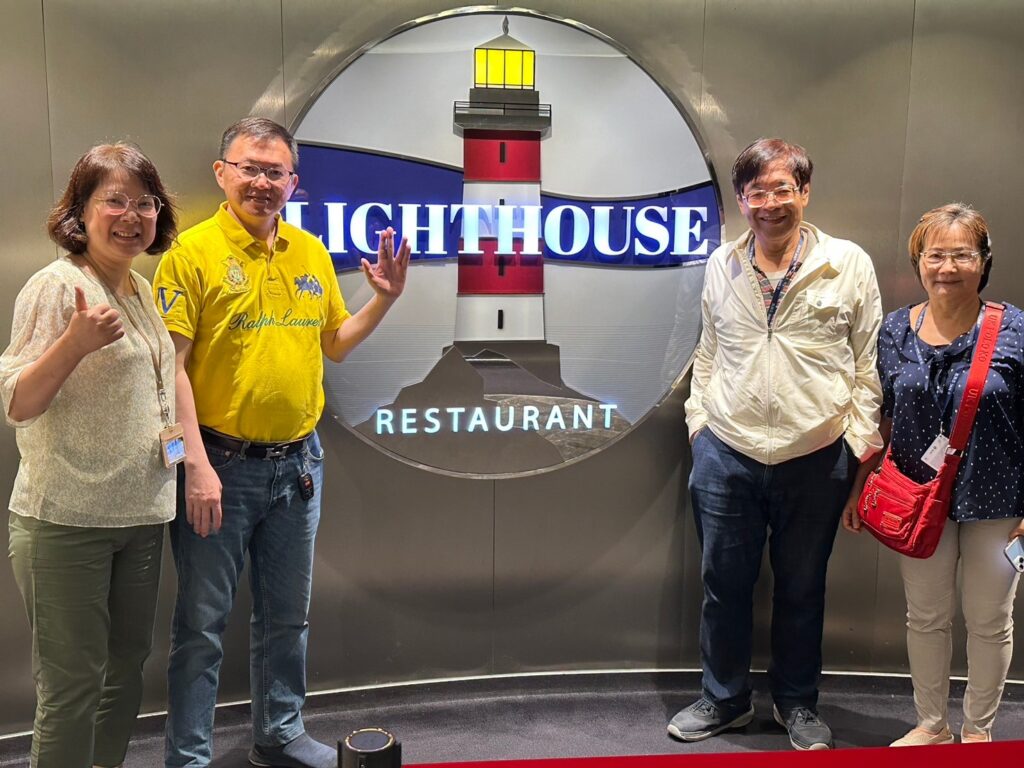
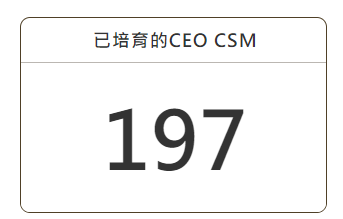
Inviting Friends to Join
Initially, I planned to go when the number of people reached 100 in 2023. However, since my family members were unavailable to accompany me on the cruise, I invited my very close friend Deputy Ye and his wife to join me.
At first, Deputy Ye did not agree, but later he kept inviting me to travel abroad with him. I asked if he had ever been on a cruise, and the answer was surprisingly no.
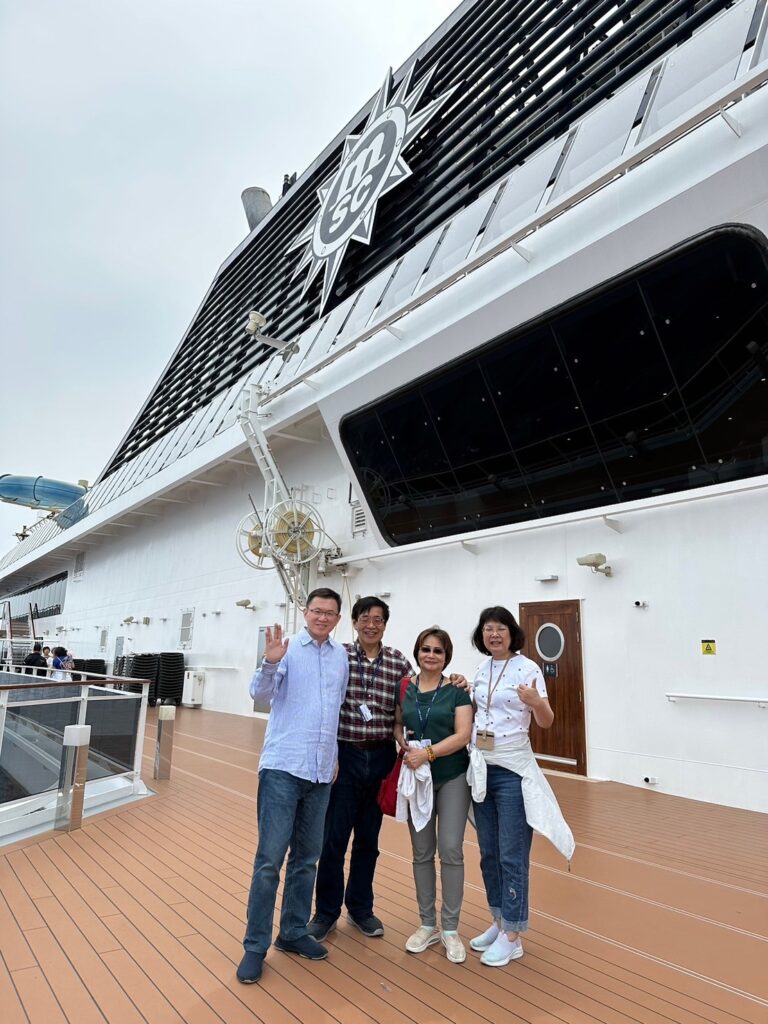
After I introduced him to the various exciting activities on the cruise, he finally agreed to join me. We bought our cruise tickets in January, but the trip didn’t take place until June, spending half of the time in anticipation.
Cruise Trip Details
We took a cruise from Yokohama, Japan to Taiwan, which lasted a total of seven days. First, we flew to Yokohama. After departing from Yokohama, the cruise took three days to reach Okinawa Island, then the next day to Ishigaki Island, and finally arrived at Keelung Port. After a one-day stay in Keelung, the passengers were officially dismissed.

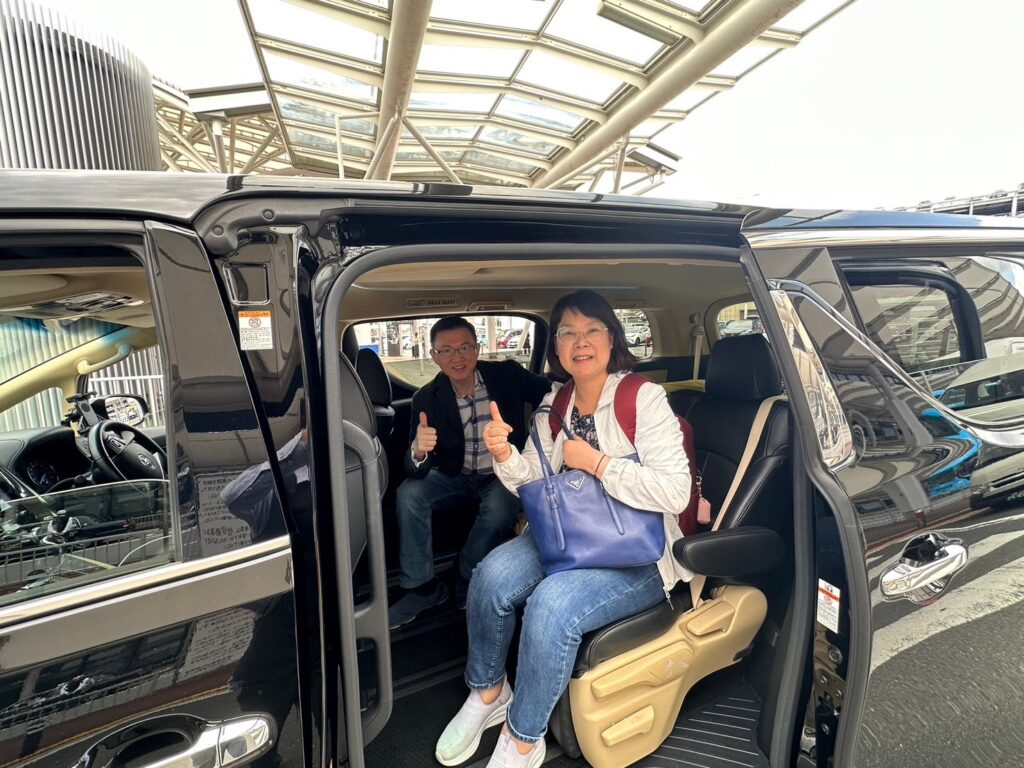
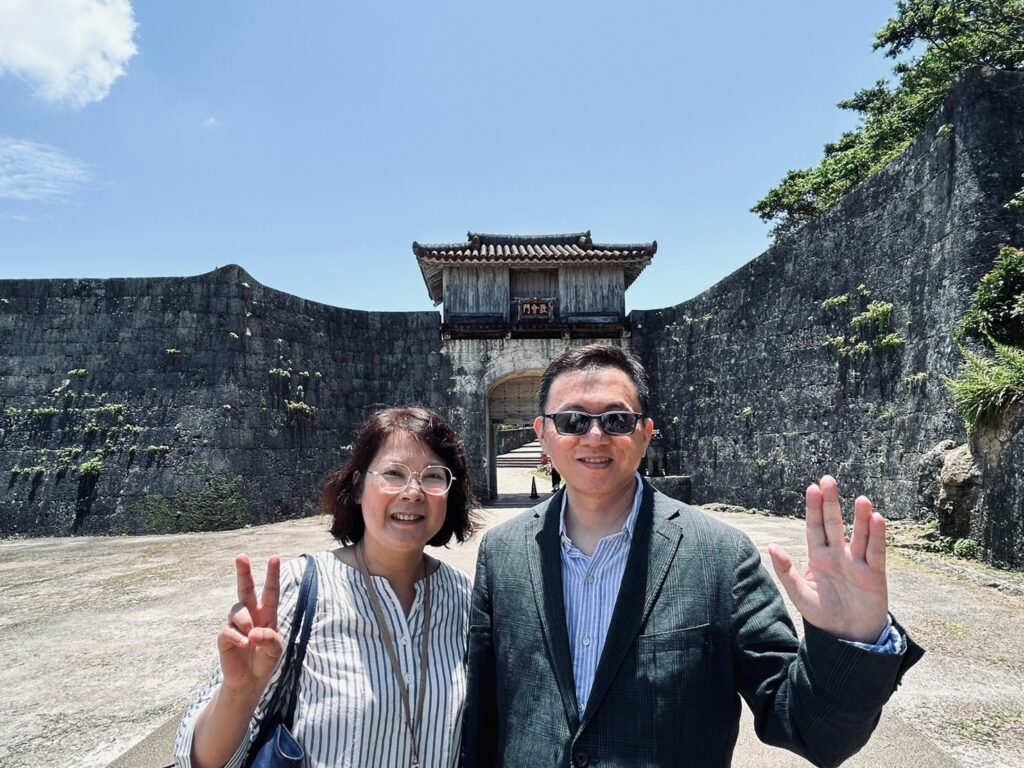
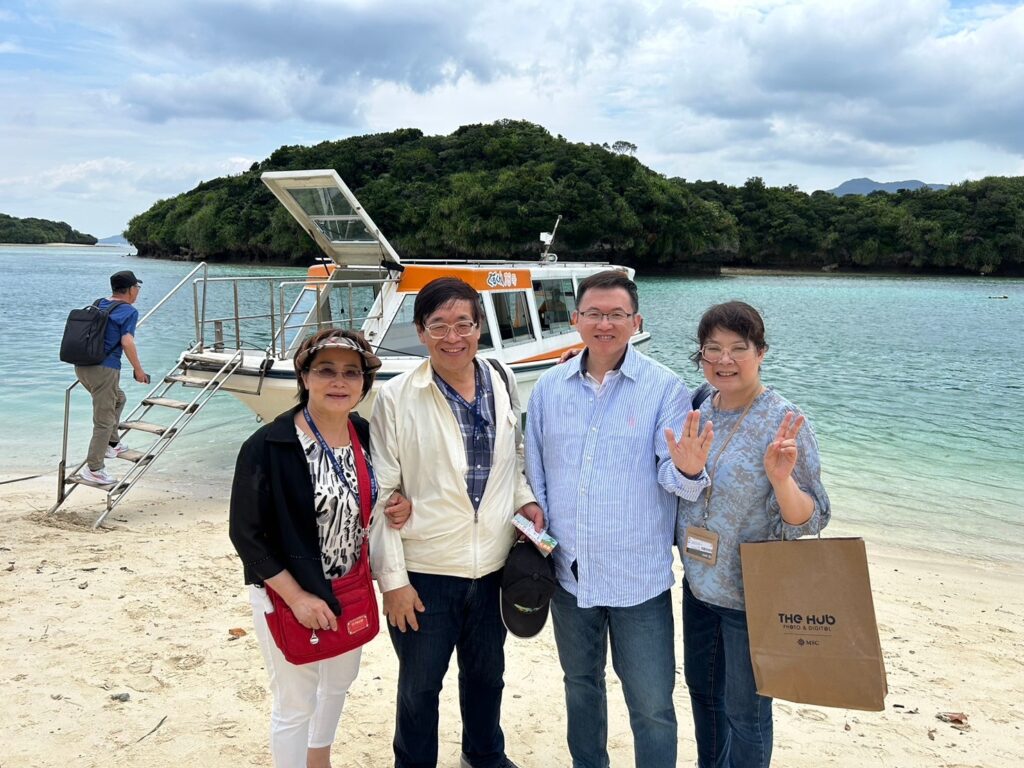
The entire cruise ship, MSC , is enormous, capable of accommodating over 5,000 people. Although the exact number of passengers is unknown, I believe it reached the 5,000 mark. This is roughly equivalent to the capacity of 19 A300 airplanes. Each room can accommodate 2 to 4 people, with a total capacity of around 5,000 passengers.
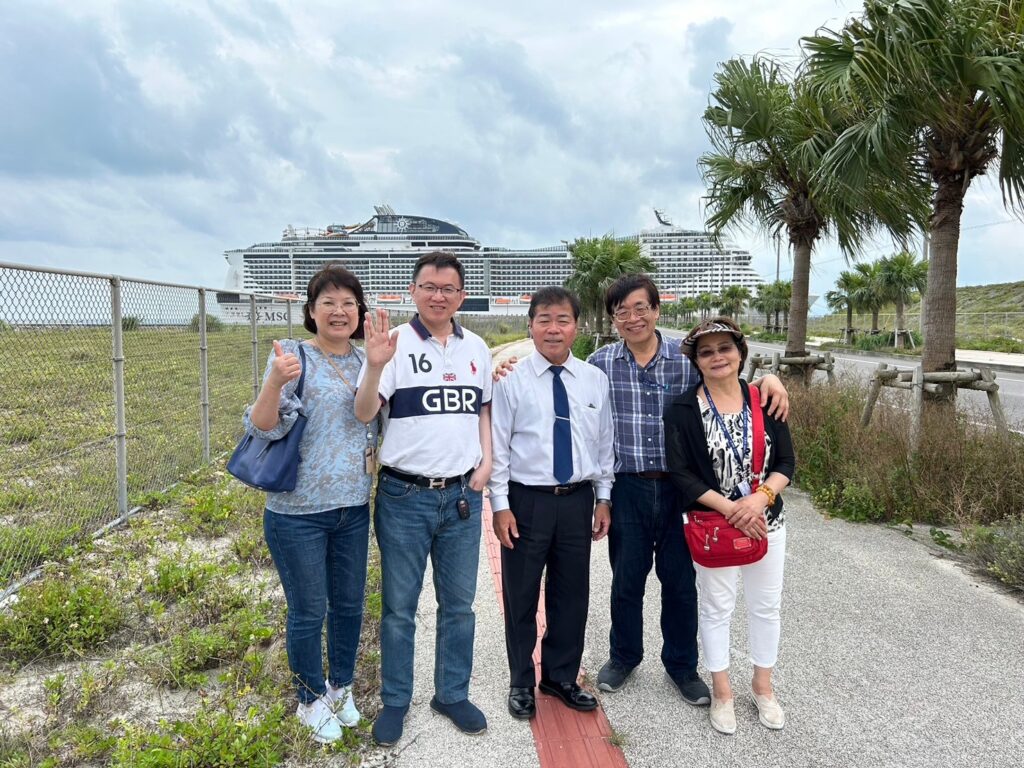
The main pleasure of the cruise is not walking around or viewing the scenery, but enjoying the various facilities on board. As someone with a quiet personality, I really appreciate this more sedentary style of entertainment.
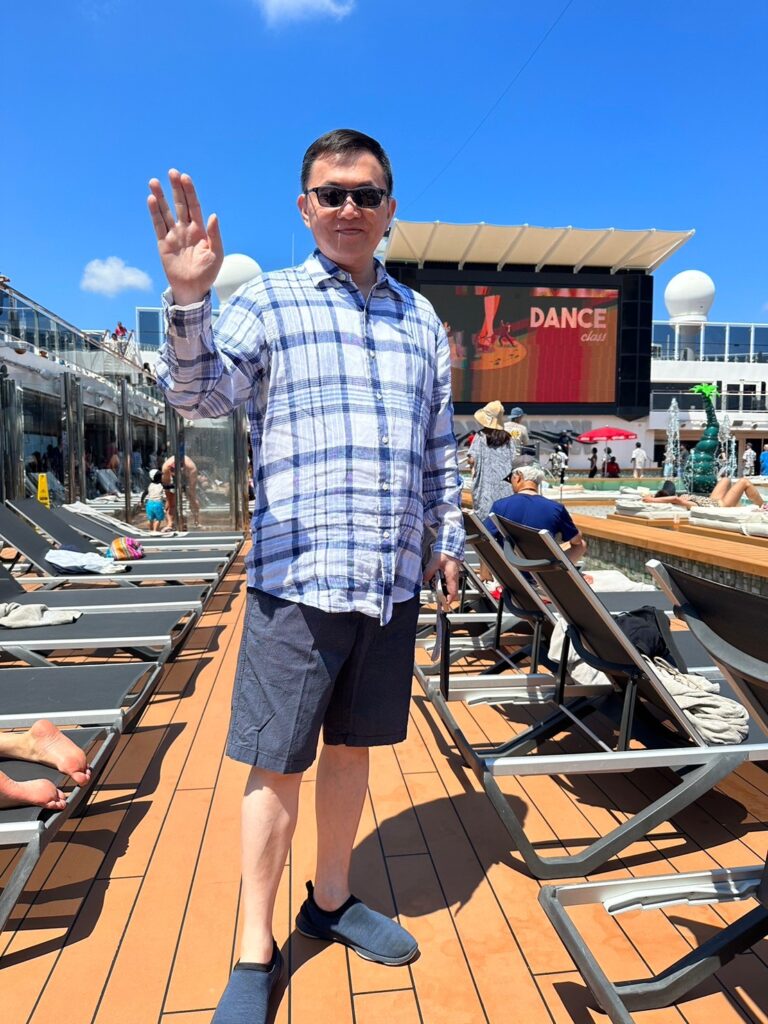
Check-in Challenges
Firstly, at check-in, there were 5000 people registering simultaneously without any system to distribute the flow, resulting in a three-hour queue to complete check-in. Although check-in was available throughout the day, implementing a staggered system with designated time slots could have significantly reduced the waiting time.
The second issue occurred during check-in, where customs and ship staff needed to create boarding passes, which also served as room keys on the ship. There were four of us: Deputy Ye and his wife Sister Shu-Zhen, Li-Xiu, and myself. However, three of us encountered difficulties due to a network outage that prevented successful registration.
The network issues were due to an inability to retrieve data. I saw staff holding a tablet smaller than an iPad, constantly lifting it to search for a stronger WiFi signal. They explained that this method enhanced the WiFi strength, but the high volume of simultaneous network usage made data retrieval difficult.
Ideally, a wired internet connection should be available to avoid such delays. As it took 15 minutes to resolve issues for three people, assuming a 75% chance of network problems, boarding 5000 passengers would be significantly slowed down.
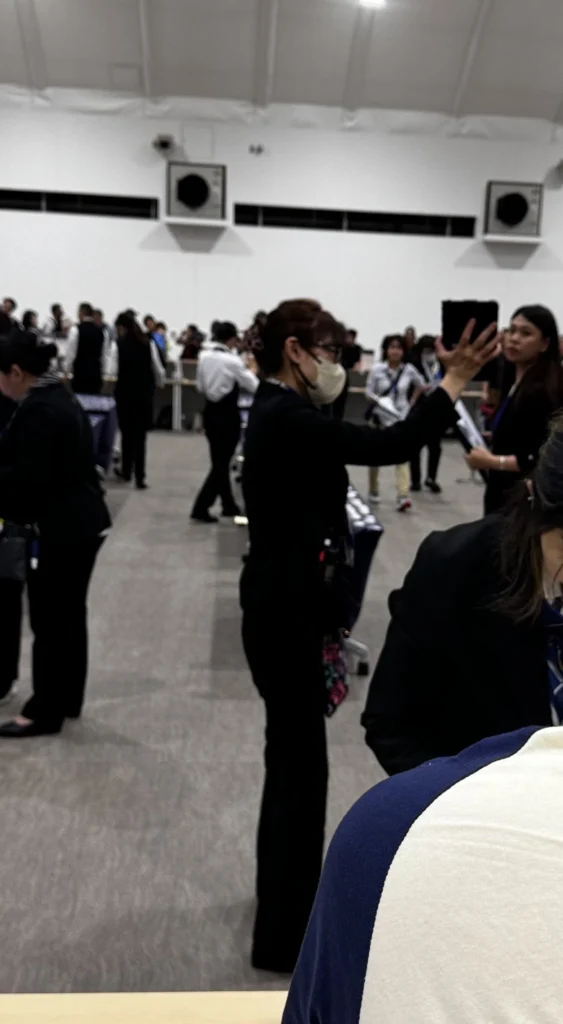
The third problem was the extensive time spent queuing, especially during the scanning of room cards. With only two gates available for scanning, many people ended up waiting in line. This process could be automated. Given that we are in the era of FaceID, why not employ automatic room card scanning paired with facial recognition? If there’s a mismatch, then manual verification could be used. This would streamline the process significantly.
Dining Time Arrangement
The fourth problem was the scheduling of dining times. We are accustomed to eating dinner early, but Deputy Ye was scheduled for 17:30, while we were scheduled for 19:45, which was too late for us.
We hoped to dine together, but there was no pre-arranged mechanism for this, leading us to report our concerns to the restaurant manager. After some back-and-forth, they finally managed to seat us together. We ended up sharing a table with other guests, totaling eight people at one table. These eight individuals remained in contact after disembarking from the cruise, becoming good friends.
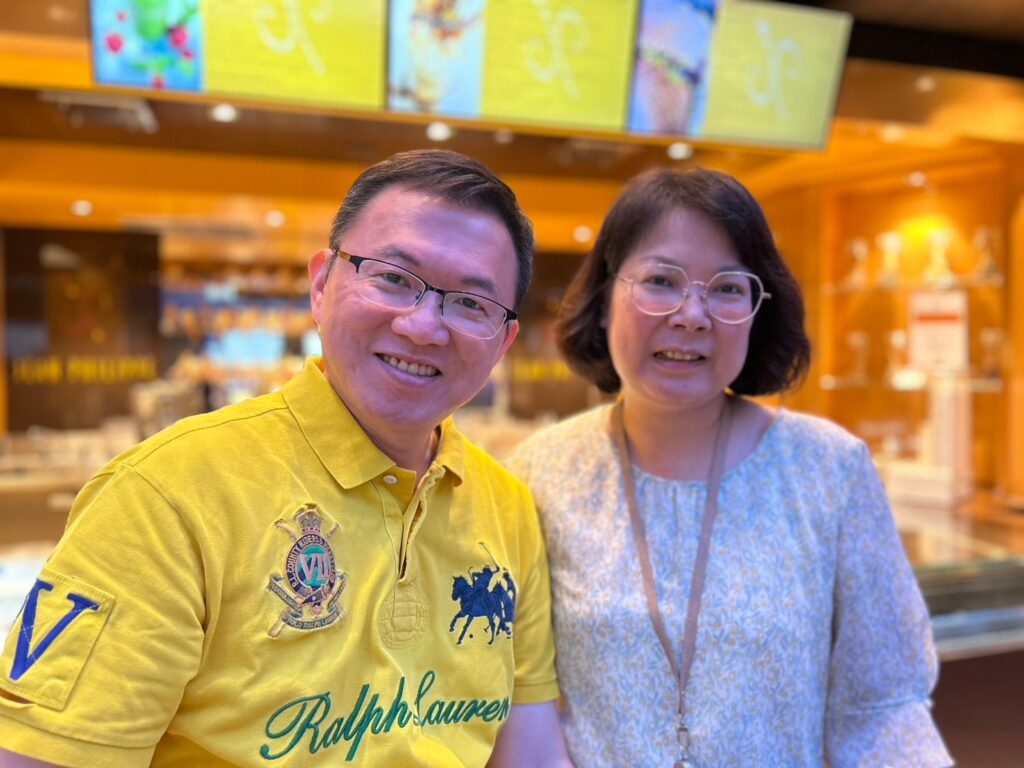
Show Time
Every evening before dinner, we made sure to watch the spectacular performances at 6:30 PM. The theater was beautifully grand and spacious, capable of accommodating at least a thousand people. The performance team consisted of 16 members, offering a different show daily, each one as thrilling as the last.

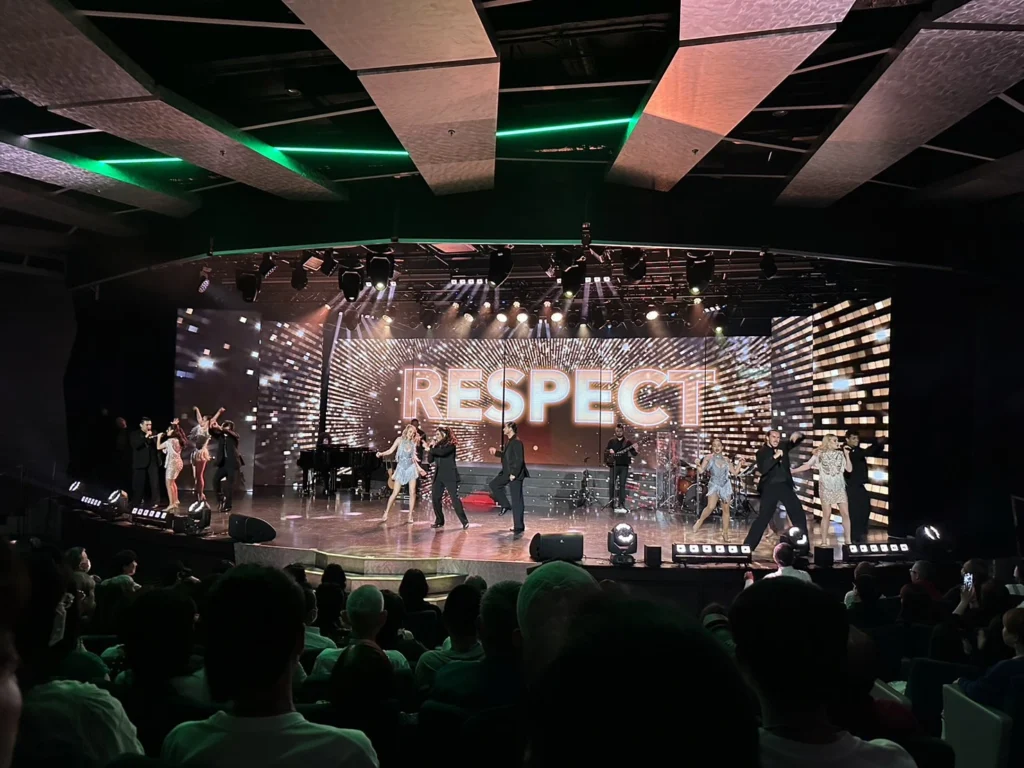

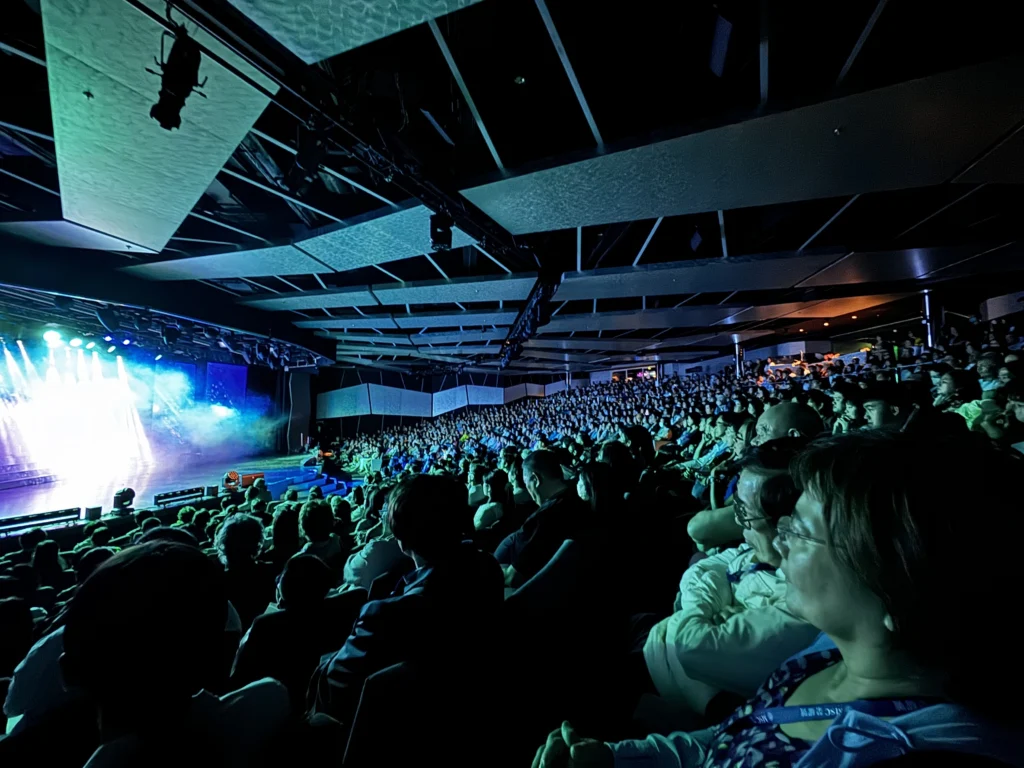
Discontent with Docking at Keelung Port
The biggest complaint from passengers was about docking at Keelung Port. Although we were already exhausted from disembarking at Okinawa and Ishigaki Island, by the third day at Keelung Port, we did not want to go ashore. However, the cruise company required all 5,000 passengers to disembark before noon to complete the entry procedures into Taiwan.
We were rushed off the ship unexpectedly. Originally planned to finish by noon, the process was delayed until 3 PM before we could return to the ship, leaving everyone hungry as we had missed lunch. This led to an unplanned excursion in Keelung.
Fortunately, one of our tablemates from Keelung guided us around, which was a relief since many were upset about being rushed off the ship without prior warning, disembarking at 10 AM and not returning until 3 PM. This caused significant dissatisfaction.
The requirement for everyone to disembark might have been a directive from the immigration authorities or the cruise company’s decision to facilitate a quicker boarding process for new passengers the following day.
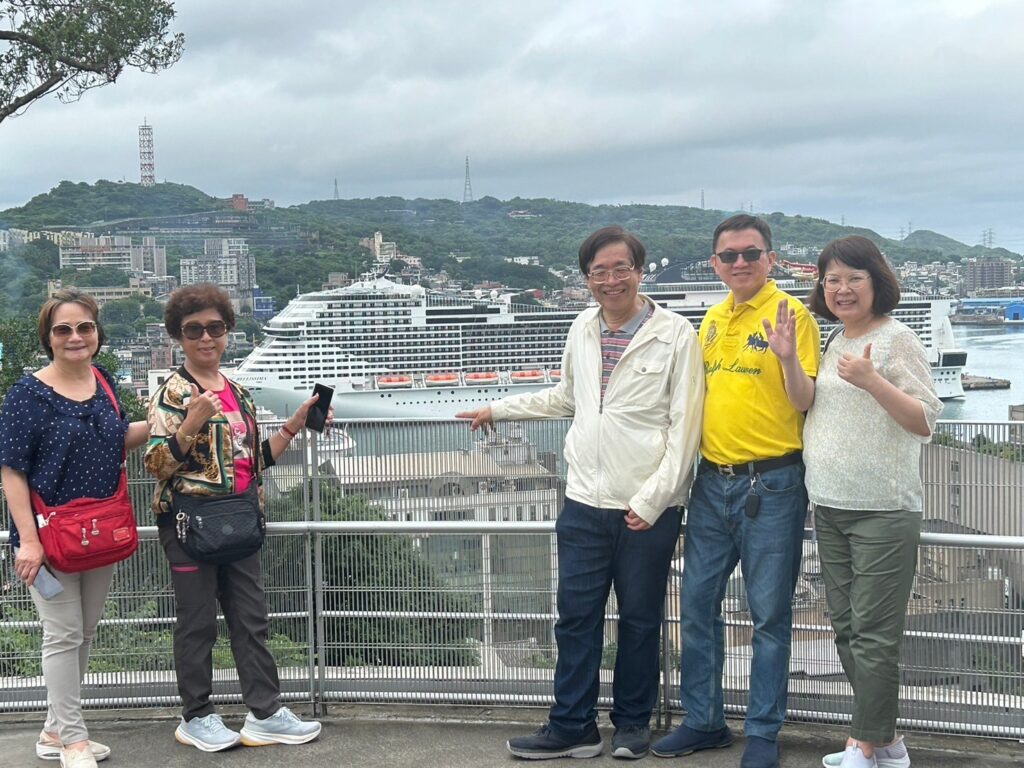
Photography Service
Additionally, the photography service was notably wasteful and not eco-friendly. Professional photographers charged about 600 TWD per photo, yet very few people actually bought them, estimated at only about 1/10th. Most of the photos not sold were simply discarded.
We all used the MSC For Me app on the cruise, which featured announcements and could have been utilized more effectively. A more environmentally friendly approach would be to upload lower resolution photos or watermarked images to the app, and then ask passengers if they wish to purchase the high-resolution versions. This would reduce waste significantly.

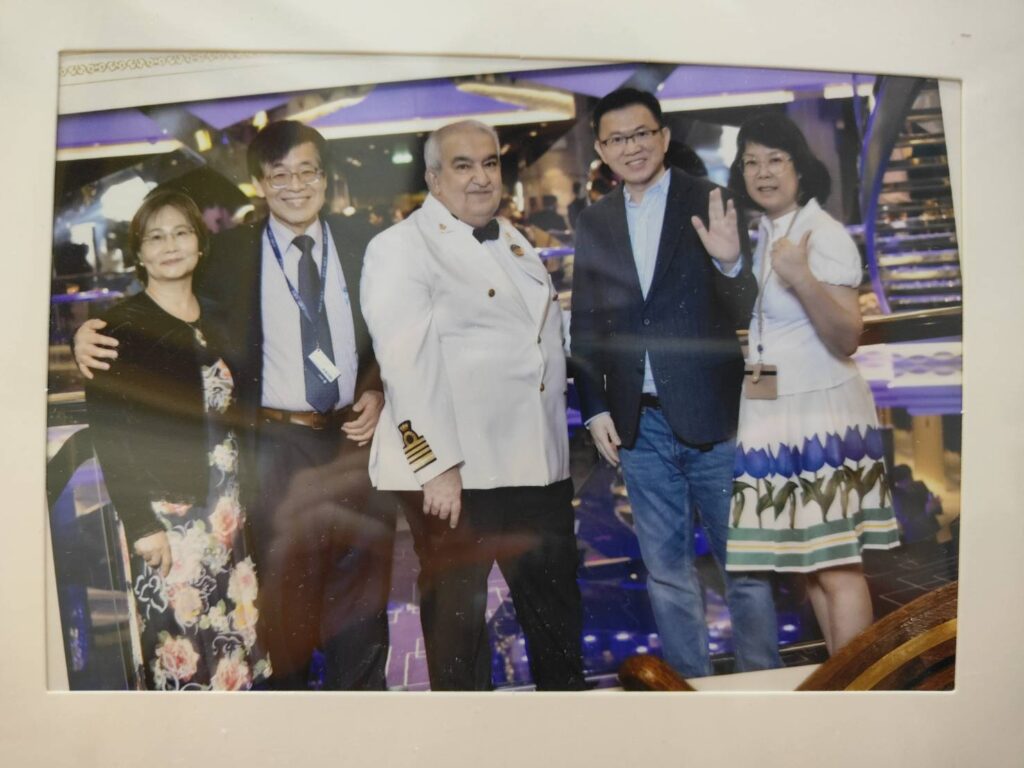
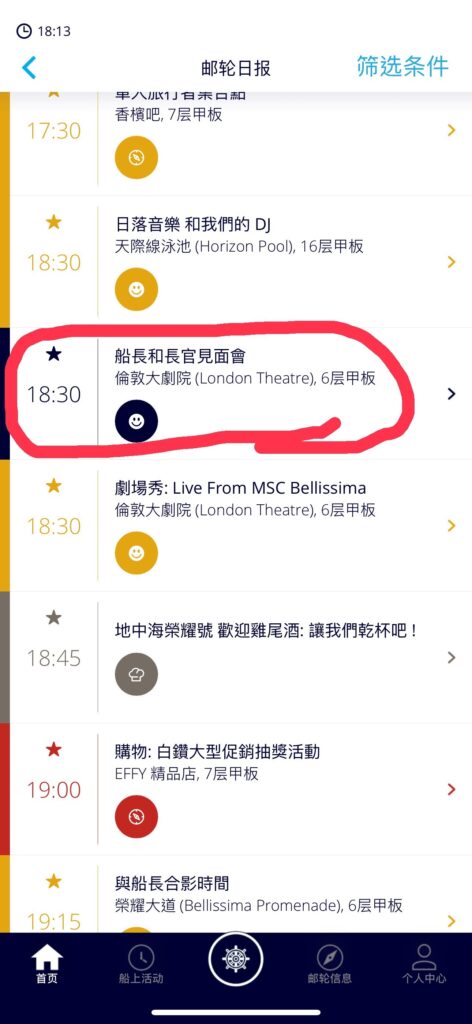
The only photo we purchased was a group picture with the captain and Deputy Ye, which is our most treasured souvenir. On the cruise, there was a daily itinerary, scheduling activities from 7 AM to 10 PM, including aerobics, swimming lessons, table tennis tournaments, and more.
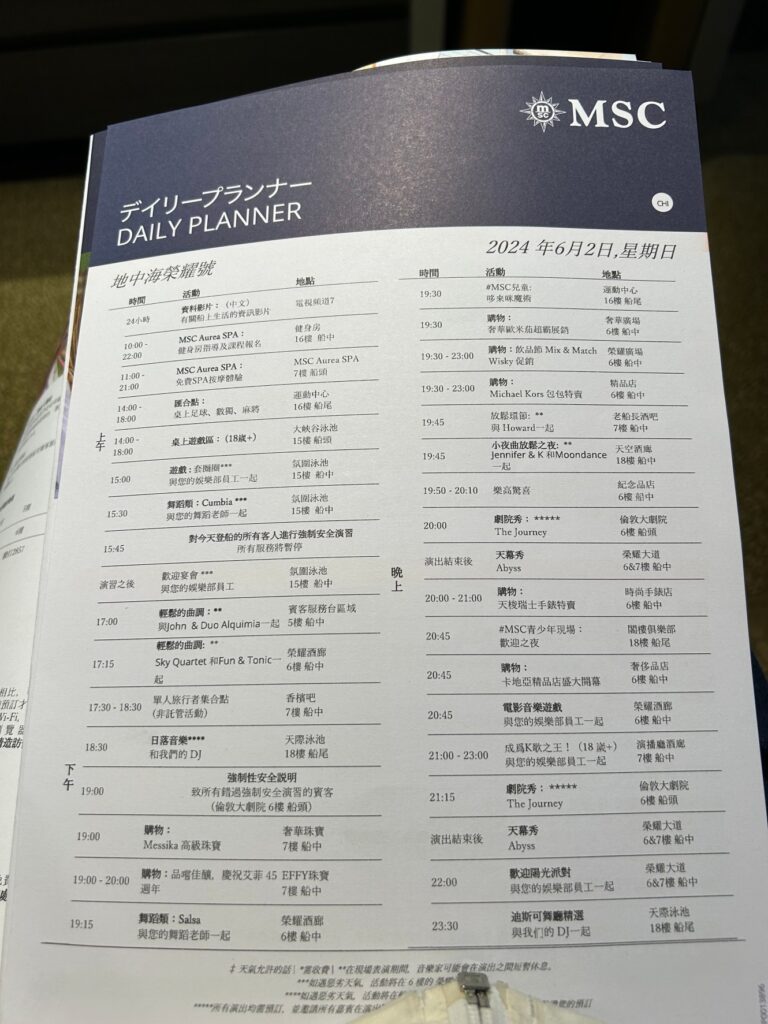
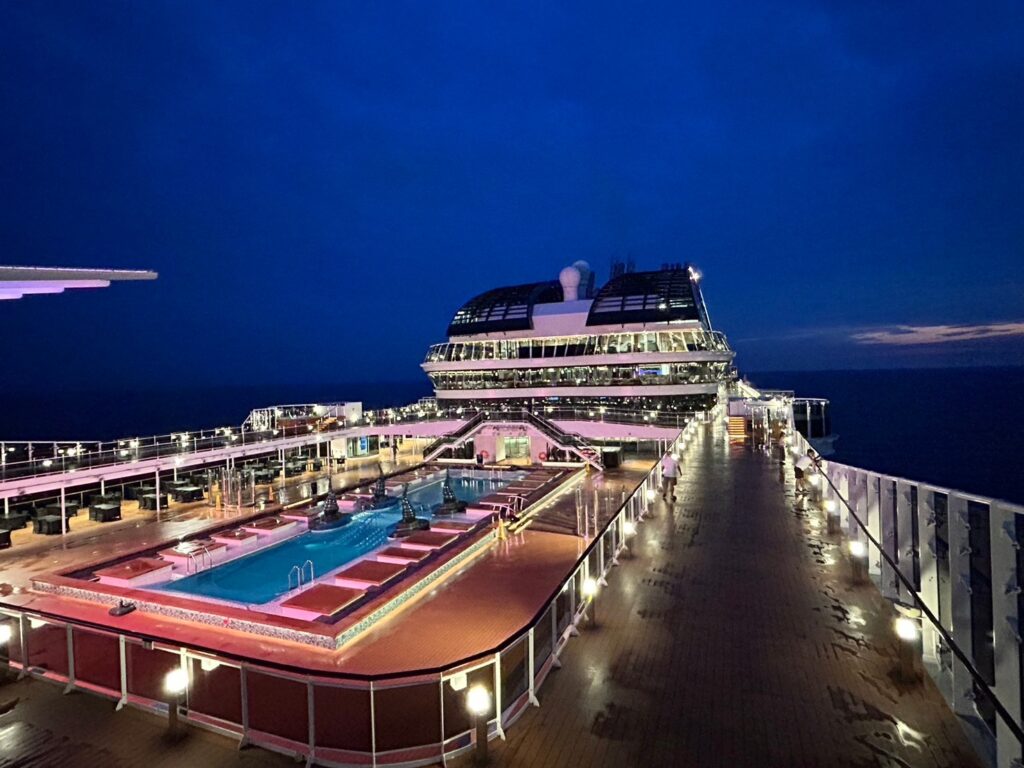
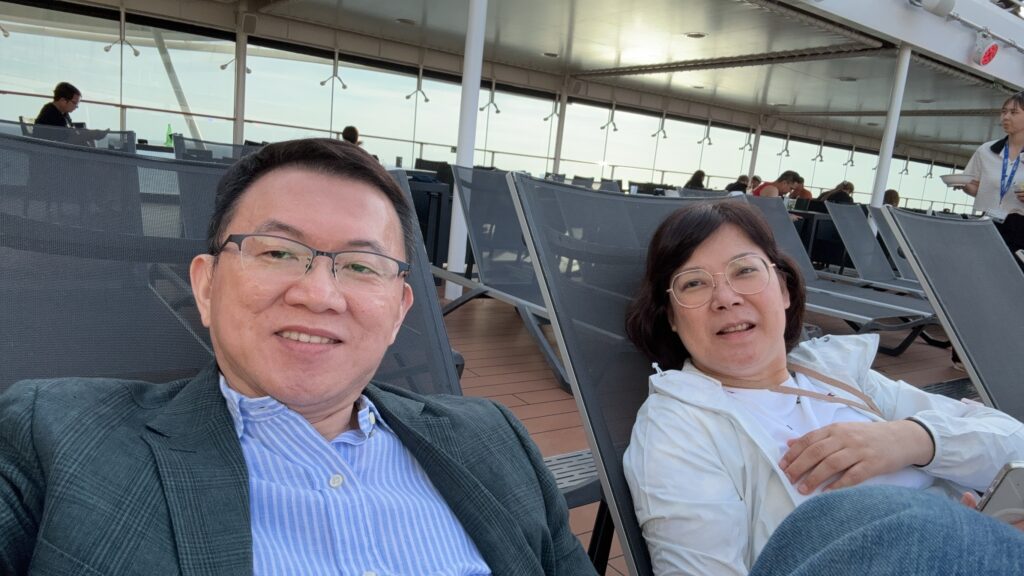
The cruise ship had three restaurants, and all dining costs were included in the ticket price, so you could eat as much as you liked without additional charges. On the last day, we purchased two meals at a pay-your-own-way restaurant for four people, costing about 7,000 TWD in total. Unfortunately, because we were rushed off the ship at Keelung Port, we were unable to enjoy these meals, which was very disappointing.
Wonderful Chatting Moments
Deputy Ye and I particularly enjoy sitting by the window, facing the sea breeze, and having good conversations at the dining table about Agile practices and national policies. Even though he’s retired, I think he should write a book about how to be an excellent bureaucrat—he truly deserves that recognition.
I’ve known Deputy Ye for over fifteen years. We first met when I served as the chairman of the International Project Management Association (ITPM), during which I sent a document to related government departments inviting them to a lecture on how project management could be applied in the public sector.
At that time, Deputy Ye was the Executive Deputy Chairman of the Council for Economic Planning and Development, a position equivalent to a deputy minister. Despite his high rank, he humbly invited senior executives from various regions to listen to my suggestions on government project management.
Since that initial connection, Deputy Ye has been very supportive of project management and wanted to promote this concept to senior civil servants. As a result, he invited me to teach at the Civil Service College.
During our collaboration, we jointly promoted the establishment of national standards for project management, successfully translating a complex ISO standard into Taiwan’s national standards. Now, Taiwan has six national project management standards issued by the Ministry of Economic Affairs.
Throughout this period, we also jointly participated in the judging of many prestigious awards, such as the Top Ten Outstanding Chinese Project Managers and PMI’s Benchmarking Enterprise Award, where Deputy Ye served as the chief judge. We’ve experienced many ups and downs together and have become close friends who can talk about anything.
Despite being a high-ranking official, Deputy Ye doesn’t carry the air of a bureaucrat; instead, he’s very approachable and always considers others first. Meeting such a good friend in my lifetime is truly one of the greatest blessings.
His wife and he are refreshingly humble, and everyone likes them. The ladies at our table enjoyed chatting with Deputy Ye and Sister Shu-Zhen so much that you wouldn’t guess he used to hold such a high position.
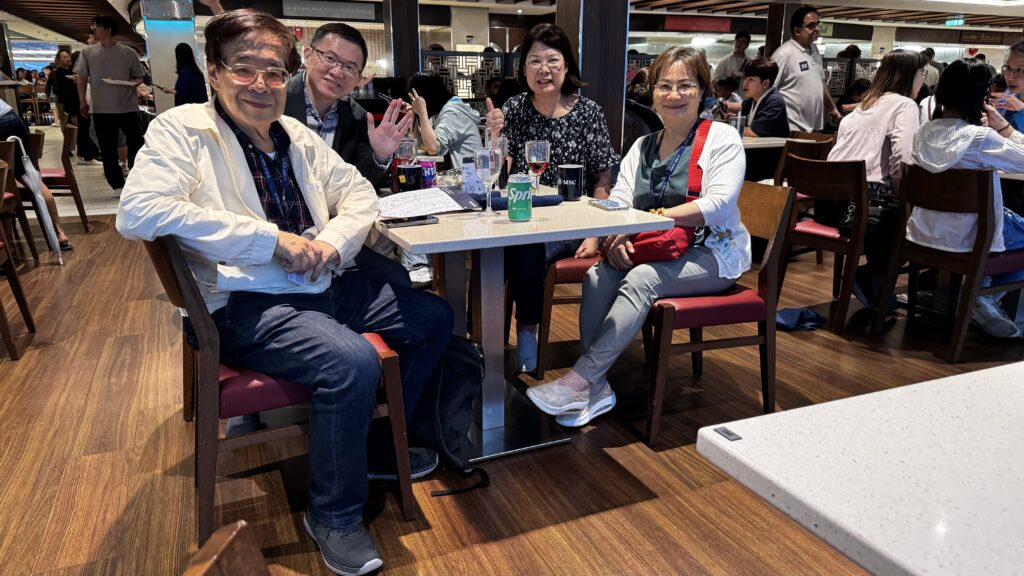
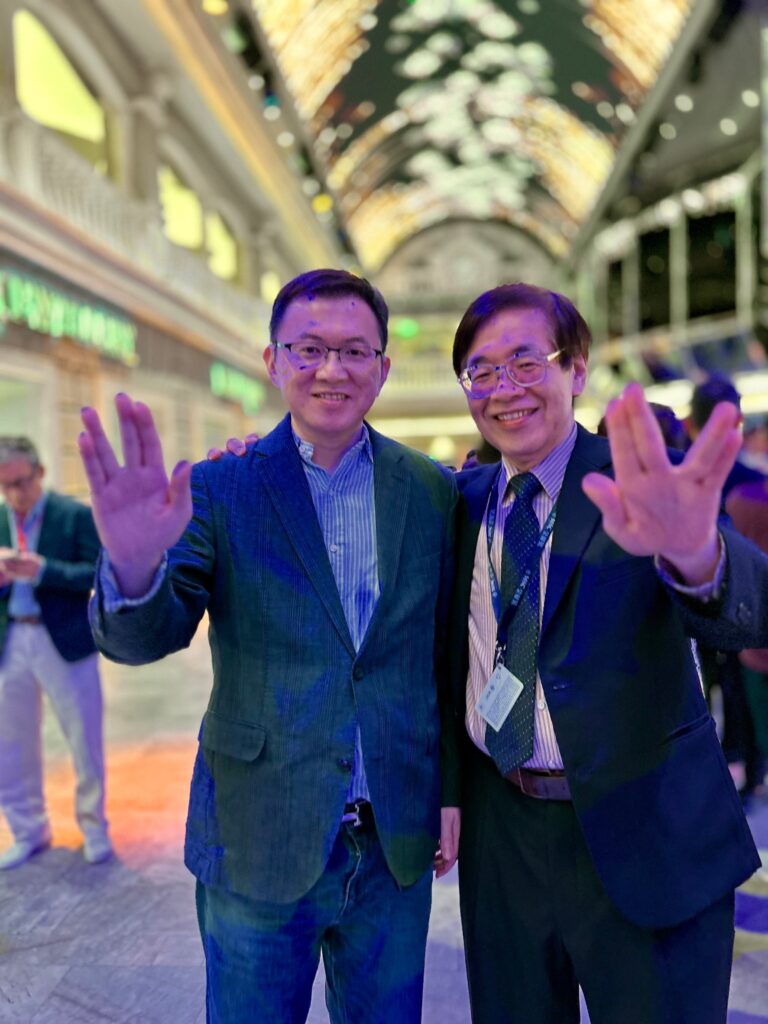
Comfort and Cleanliness of the Room
I spent about a third of my time resting in the room. One of the things Deputy Ye and I did most on the ship was walking. We would happily chat and enjoy the scenery as we walked, and after our walks, I would return to my room to rest.
Although the room was inside the cabin, it was moderately sized, small but clean. The bathroom was also kept very clean, with an average of two cleanings per day.
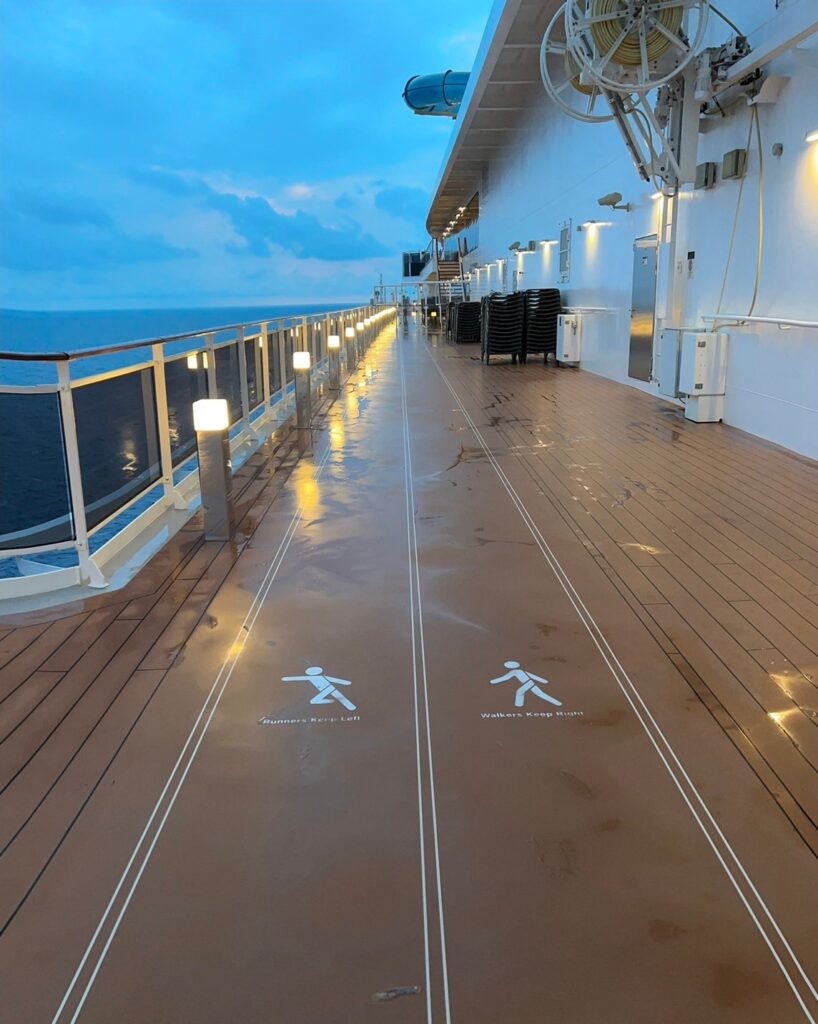
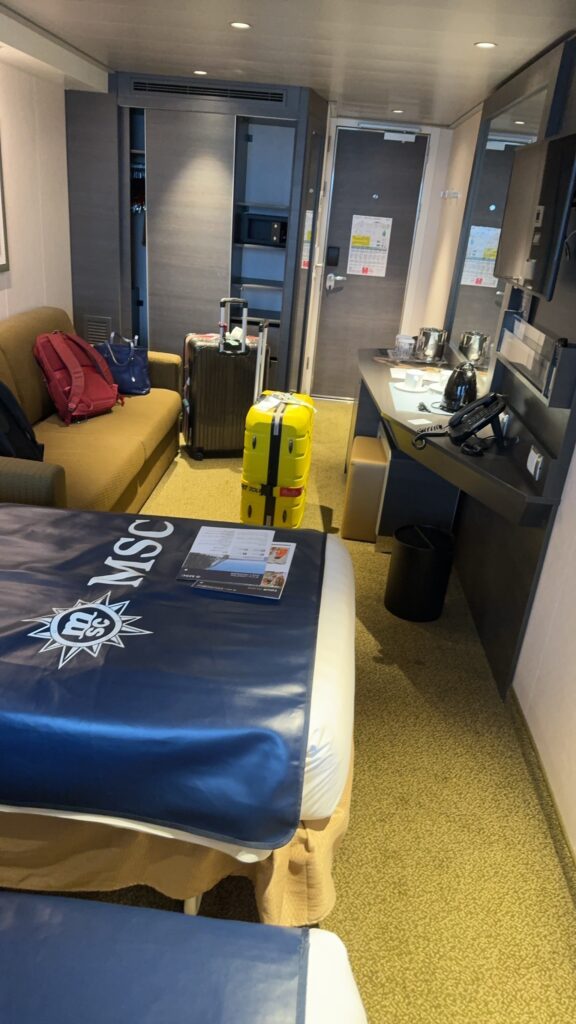
Conclusion, Lessons Learned
The service staff on the cruise were all very good, and the overall itinerary arrangement made our cruise trip a wonderful memory and experience. Below are the experiences and lessons learned from this trip, along with areas where I think improvements can be made to enhance the experience for passengers.
- Always carefully check and confirm your bill to avoid losses.
- Foster open communication with friends for long-lasting relationships.
- Ensure you have sufficient information to save money and purchase good items.
- Try different flavors of ice cream to understand quality and reasonable pricing.
- Avoid rushing during embarkation and disembarkation to prevent unnecessary haste.
- Don’t blindly trust travel agencies; make sure to understand your rights and benefits.
- Compare prices and options from multiple cruise lines to find the itinerary that best suits your preferences through thorough business analysis.
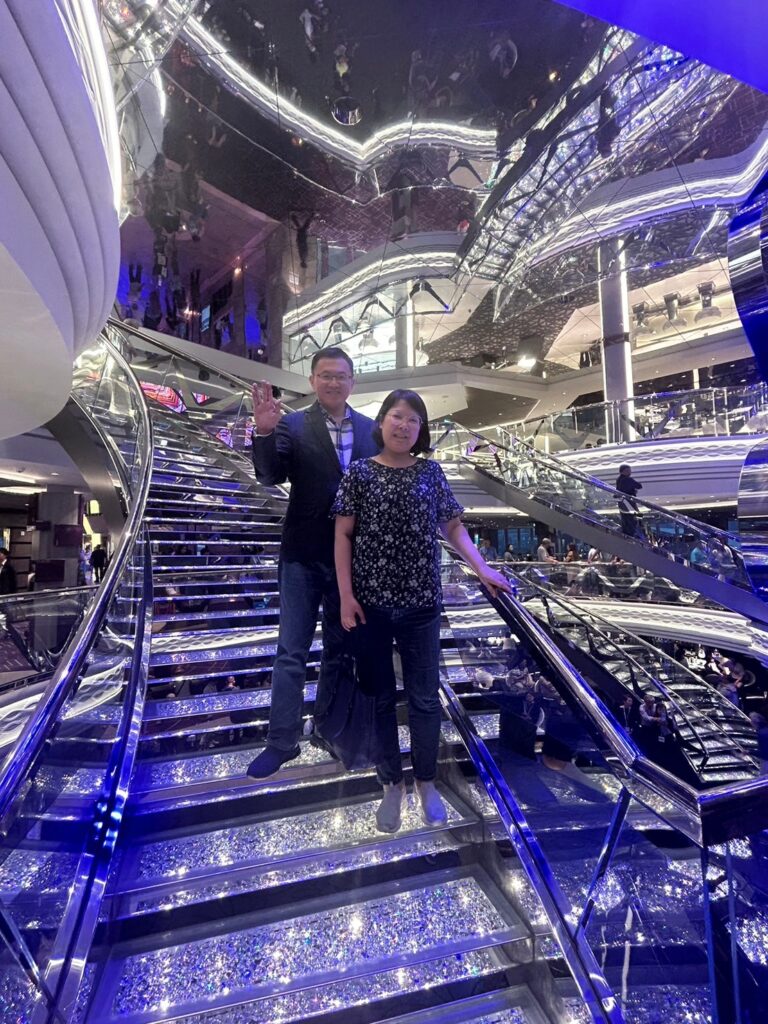
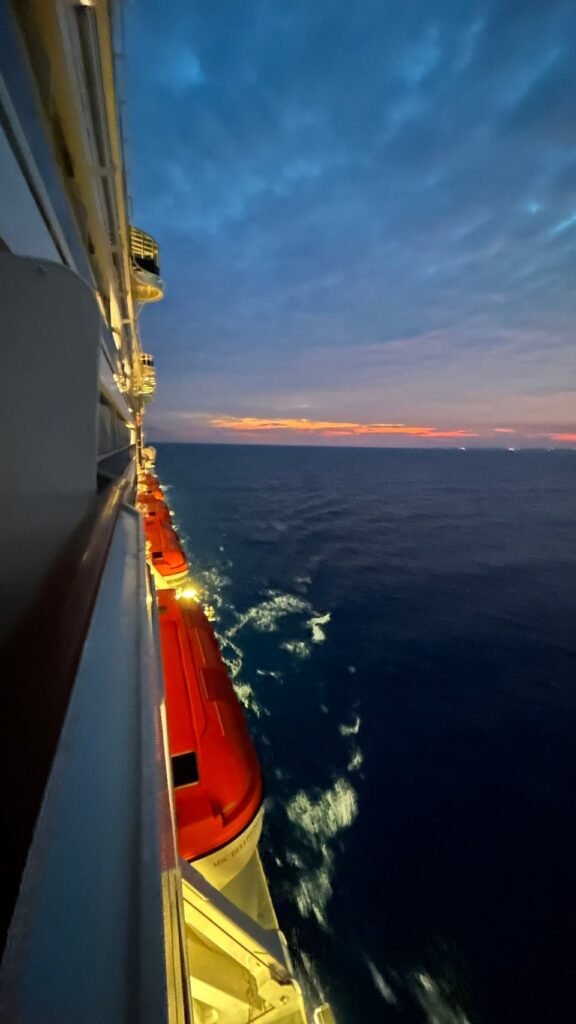
Improvement Suggestions
After returning, I decided to write a letter to the cruise company to let them know about the areas for improvement from this trip. This wasn’t my first time on a cruise, but encountering such issues with a mature process was quite surprising.
I believe setting a Work In Progress (WIP) limit would be beneficial; the ship should only accommodate 80% of its capacity, not fill to maximum capacity. This can enhance the cruise experience for passengers. However, I will consider agile ways to address these issues. While the Scrum framework may not directly solve these problems, using Lean methods should be effective, especially since many issues are related to queuing.
For example, we had 100 people in line but only 2 ticket scanning counters. Five years ago, ticket scanning was already manual on the cruise I took; it’s outdated to still use manual scanning now, and FaceID technology should be implemented.
Another issue is the manual operation for card binding on board. However, now passengers use self-service kiosks to top up their cards. These kiosks operate similarly to ATMs, but the interface is not user-friendly. As a result, there is almost always a service staff member next to each kiosk to assist passengers with operational issues. This poor design has increased the purchase cost of the kiosks and the workload of handling exceptions. Additionally, the development of the top-up process did not follow agile methods, leading to a subpar user experience.
The agile elements and advantages of theship’s staff:
- Cross-functional teamwork with role flexibility: Team members can fill in for each other as needed, fostering collaboration across different functions.
- Assistance and support during queues: There’s always someone available to assist and help solve problems during queues, ensuring a smooth customer experience.
- Daily schedule: A clear daily schedule helps everyone know the agenda and priorities for the day, improving coordination and efficiency.
- People-oriented problem-solving: When issues arise, the focus is on resolving them in a way that prioritizes the well-being and satisfaction of passengers.